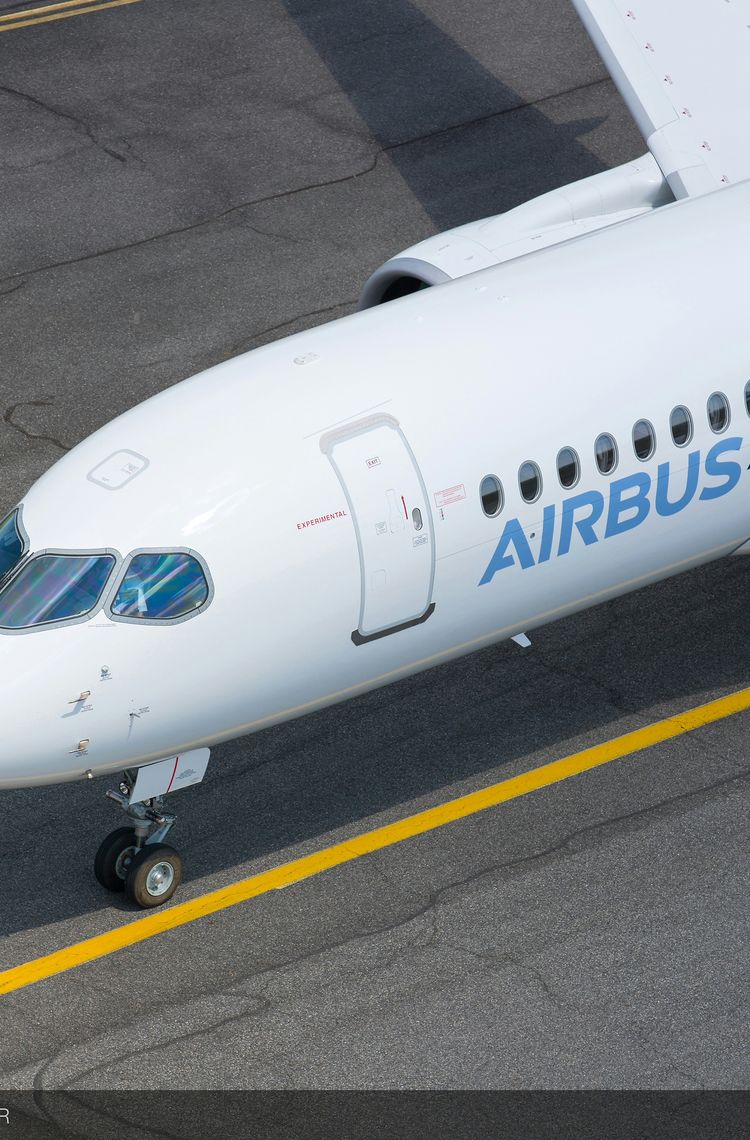Today, many of the planes flying our skies are test-proven aircraft – built on +40-year-old designs – that have been enhanced with the latest engine and avionics technologies.
However, every few decades, an aircraft comes along that boldly makes a fresh start. Most recently, that aircraft is the A220.
“With the A220, we really started from a blank slate,” explains Jean-François Parent, Airbus A220 Chief Engineer. “Our objective was to build the most efficient small single-aisle aircraft on the market, and we engineered – in a thoughtful way – the features that would deliver on this objective.”
Indeed, the A220 Family – comprising two variants: A220-100 and A220-300 – are “clean-sheet” aircraft built on an entirely new design that rethinks aerodynamic efficiency, allows for the use of the most advanced materials, and integrates the latest systems and avionics.
Because developing new aircraft is significantly more costly than simply improving an existing design, this approach is generally used when there is a need to serve new or different markets that existing designs can’t address. For the A220, that segment is the 100- to 160-seat market.
Improved efficiency at the heart of a clean-sheet design
Optimising aerodynamic efficiency is at the core of the A220’s airframe design. To achieve this, the A220 boasts advanced features, such as the newly designed nose and tailcone, both of which reduce the drag on the aircraft. The fuselage wetted area – which is the entire surface area that is in direct contact with the air – is the smallest for aircraft of its class, keeping drag at a minimum.
Among the A220’s most noteworthy innovations is its 40% use of advanced materials. The majority of aircraft are built from a combination of titanium, steel and aluminium. The A220 is no exception in this respect, but it also incorporates advanced composites – such as polymers and carbon fibre – in the wing, centre wingbox, empennage, rear fuselage and horizontal stabiliser. These composite materials are less prone to corrosion and fatigue compared to metal, and offer an exceptional strength-to-weight ratio. Case in point: the A220’s wing is 10% lighter than a conventional all-aluminium wing, which reduces fuel burn and emissions.
Inside the aircraft, the A220’s cockpit – designed by pilots for pilots – is widely appreciated for its modern and state-of-the-art flight deck powered by Airbus’ fly-by-wire technology. The simplified yet robust layout was designed to be as intuitive as possible with large screens, fewer manual controls and user-friendly on-board equipment – such as two-mode fly-by-wire flight controls and sidestick controllers. This cockpit layout enables pilots to fly the A220 Family’s two variants with the same type rating.
The A220’s engine and cabin have also been given the clean-sheet treatment with incredible results – improvements that will be explored more closely in future installments of the A220 web series.
The latest improvements for enhanced safety & performance
Despite the integration of the latest technologies from the get-go, a clean-sheet design still requires continuous improvement to keep it at the forefront of innovation. And the A220 has continued to integrate new features and functionalities since its launch.
For example, the A220-100 and A220-300 have consistently benefited from maximum take-off weight (MTOW) increases – approved by international regulatory authorities – throughout the years with the first increases starting in 2020. Since then, the A220’s MTOW has increased by 3 tonnes, which has expanded the aircraft’s maximum range. The latest payload increase is expected later this year.
Avionics upgrades are also a top priority for the A220. In 2026, the A220 will fully integrate the latest Runway Overrun Awareness and Alerting System (ROAAS), an onboard system that alerts pilots if more deceleration force is needed to avert a runway overrun. Because runway overruns are considered one of the major contributors to aircraft accidents worldwide, this improvement will further optimise safety by providing the flight crew with timely alerts when the aircraft is at risk of not being able to stop before the end of the runway. This upgrade will align with EASA’s mandate to have ROAAS integrated in all new commercial aircraft.
Further ahead, Airbus’ HBCPlus connectivity solution, which will significantly improve onboard broadband access, is expected to arrive after 2028. And the long-awaited capability to operate on 100% sustainable aviation fuel is expected to be possible for all Airbus aircraft before 2030.
Thanks to these innovations and Airbus’ continued investment in the programme, the A220 is solidifying its reputation as one of the most innovative aircraft with a clean-sheet design that delivers.
Our objective was to build the most efficient small single-aisle aircraft on the market today, and we engineered – in a thoughtful way – the features that would deliver on this objective.
Jean-François Parent, Airbus A220 Chief Engineer
